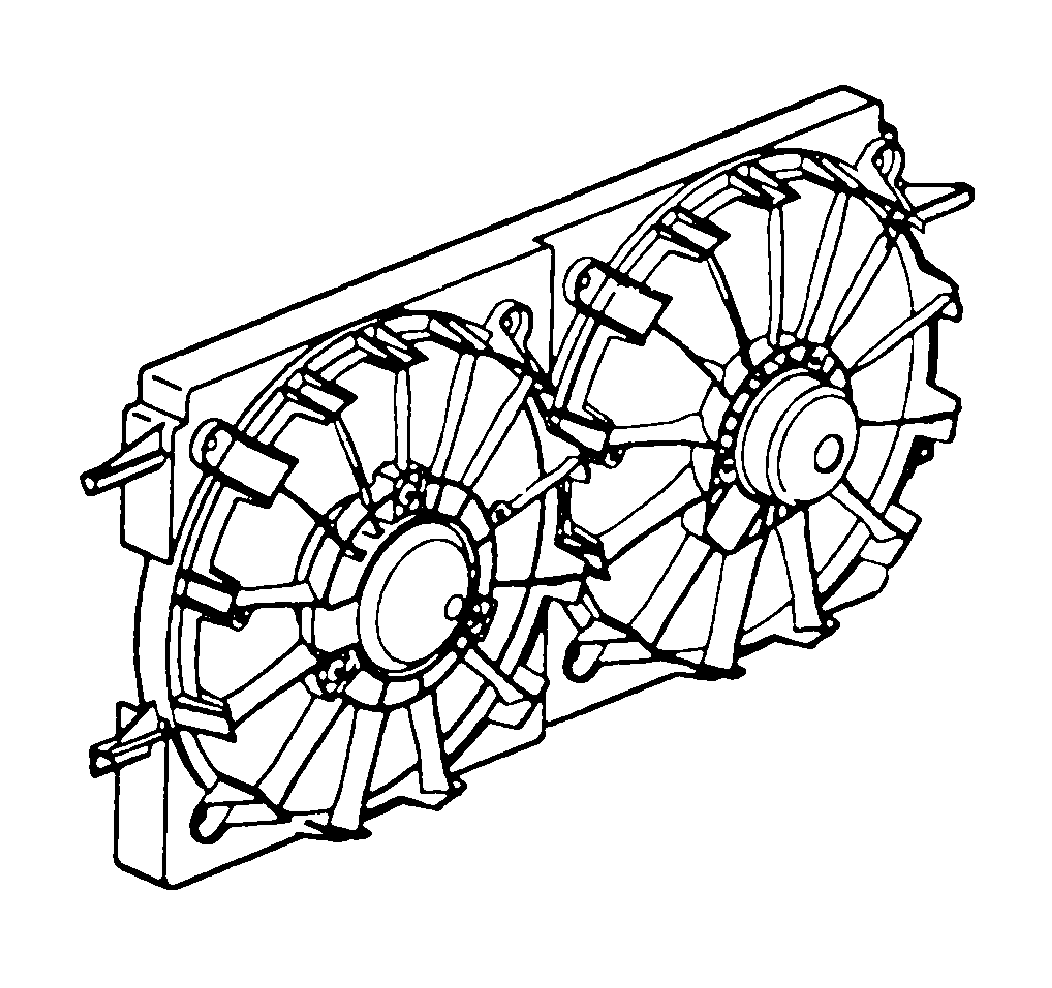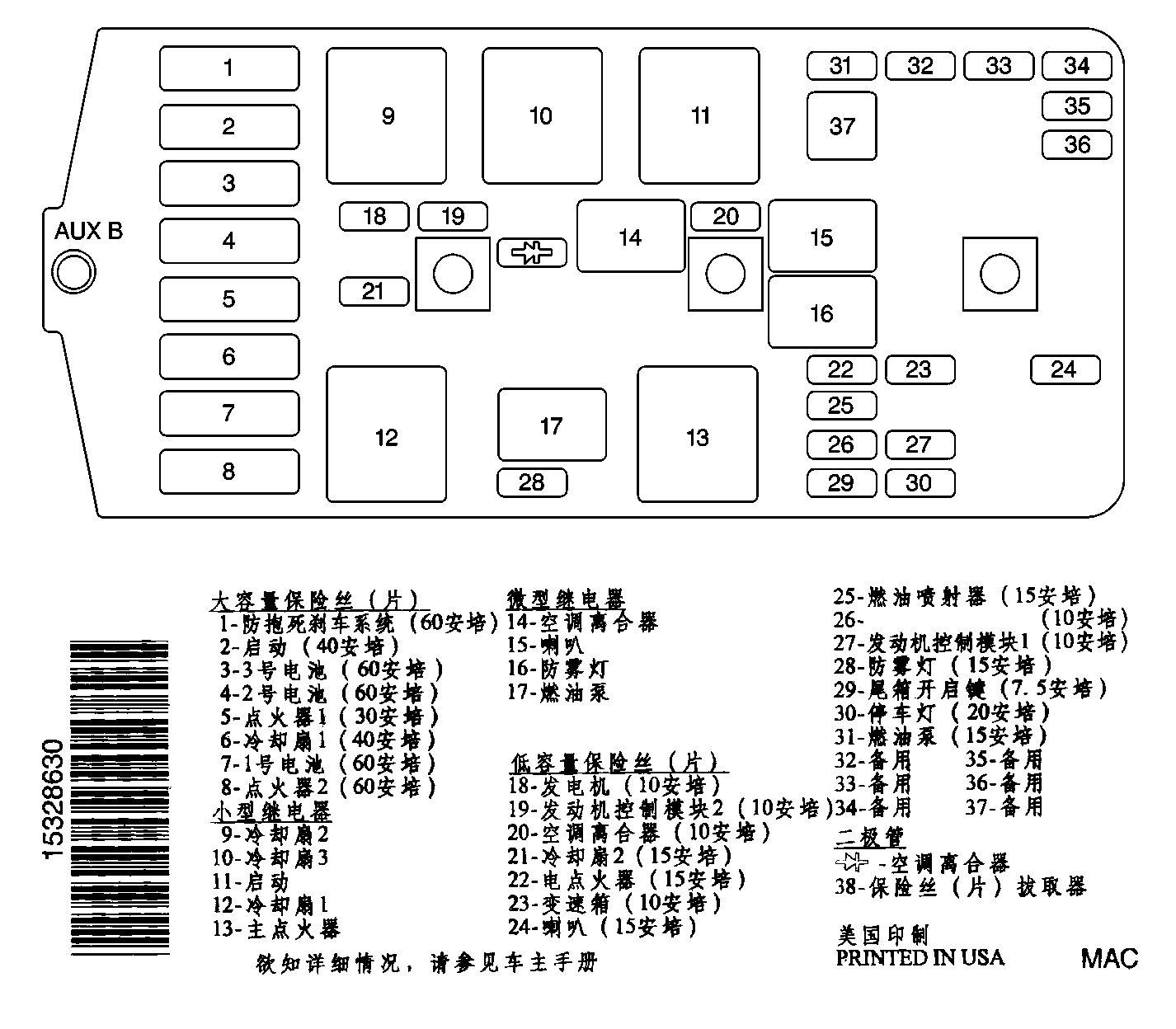The electric cooling fans are used to lower the temperature of the engine coolant flowing through the radiator. They are also used to cool the refrigerant (R-134a) flowing through the A/C condenser.

Operation
The electric cooling fan operates when the engine cooling temperature exceeds a certain value. The cooling fan on this engine is controlled by the Powertrain Control Module (PCM). The PCM turns the cooling fan ON by grounding the coil of the cooling fan relays when certain conditions are met. When the A/C is requested, the cooling fan will also be turned ON.
Power for the cooling fan motors are supplied through Maxifuses®.
The cooling fan relays are energized when current flows from the fuses in
the
Underhood Accessory Wiring Junction Block Label

, and through the relay coils to ground
through the PCM. The low speed fans control circuit is grounded for low
speed fans operation. During low speed fans operation, both fans run at
a slow speed. The high speed fans control circuit is grounded for high
speed operation. During high speed fans operation, both fans run at high
speed.
Important: : When certain diagnostic trouble codes (DTCs) are present, the PCM may command the cooling fans to run all the time. It is important to perform the Powertrain On Board Diagnostic (OBD) System Check prior to diagnosing the engine cooling fans.
If a problem that involves the low speed cooling fan relay control circuit exists, DTC P0480 Cooling Fan Relay 1 Control Circuit should set. If the problem affects the high speed cooling fan relay control circuit, DTC P0481Cooling Fan Relay 2 Control Circuit should set. A problem with the ECT sensor should set: Any of these DTCs will affect cooling fan operation and should be diagnosed before using the Electric Cooling Fan Diagnosis .